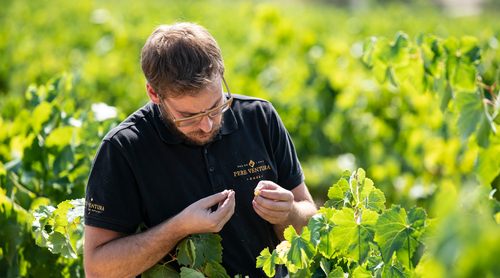
Cava D.O. History
The Cava D.O. (Denominación de Origen), a cornerstone of Spanish winemaking tradition, traces its origins back to the late 19th century in the Penedés town of Sant Sadurni d’Anoia, now known as the Cava Capital. Here, Pere Ventura’s great-grandfather helped craft Spain’s first sparkling wine in the traditional method, setting an early standard for excellence and proving that Catalonia could produce world class sparkling wines.
The story took a pivotal turn in 1887 when phylloxera ravaged the Penedés region, prompting winemakers to undertake a daunting but revelatory step of replanting their vineyards to indigenous grape varieties,
like Xarel-lo, Parellada and Macabeu.
While dedicated vintners, like Pere’s grandfather, continued to innovate and craft more authentic, site-specific Cavas, it would be decades before the first D.O. production requirements were officially established in 1969.
Next came the designating of regions, established upon Spain’s entry into the EU in 1986. Once the current regulations of the D.O. were approved in 1991, Pere Ventura founded his eponymous winery,
propelling the family tradition into the modern era.
Today, Pere Ventura continues building upon this legacy by crafting world-class sparkling wine in the town
that he—and Cava—was born, Sant Sadurni d’Anoia.


Zones and Subzones
The Cava D.O. spans several distinct zones, with Pere Ventura's roots in the most acclaimed of these: the Comtats de Barcelona. Within this zone, our vineyards flourish in the Valls d’Anoia-Foix subzone, encompassing the premier Penedès growing region and the historic town of Sant Sadurni d’Anoia.
This region’s unique microclimate and soil composition provide perfect conditions for
cultivating the native Catalan grape varieties
that distinguish our world-class Cava.
Categories of Cava
Cava is classified into categories based on aging time and grape origin. The two main categories are: Cava de Guarda and Cava de Guarda Superior.

Cava de Guarda must be aged in the bottle for a minimum of 9 months.

Cava de Guarda Superior denotes Cavas that have met rigorous standards, including extended aging (minimum of 18 months) and the use of native grapes for a more complex and elevated experience.
Pere Ventura Cava carries the Cava de Guarda Superior distinction, crafted in the traditional method with native
Catalan varieties, Xarel-lo, Macabeu and Parellada and aged 18 months in the bottle.
Experience the true taste of Cava with Pere Ventura. To learn more, read on.

